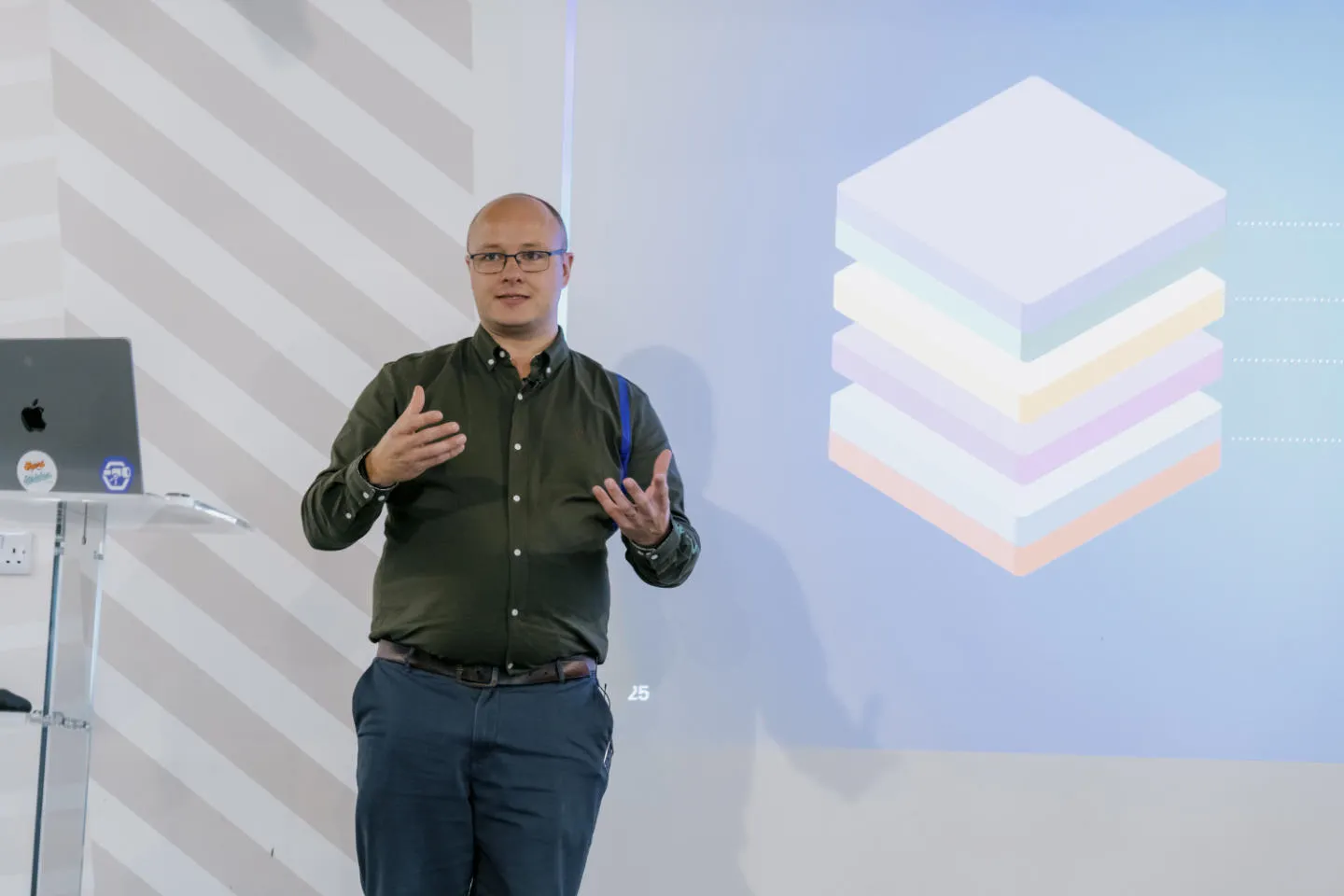AI rewards good content management
AI rewards good content management

Last week, we gathered in London for Velocity, our annual conference for Contensis and Insytful users. Every year, Velocity is about momentum – how we keep moving faster, smarter, and with purpose.
This year, the topic was one the whole world seems to be talking about: AI.
It’s exciting, chaotic, and redefining how we think about content, creativity, and technology.
Everyone’s trying to make sense of it – what it means for their teams, their users, and their future.
For every bold claim about AI changing everything, there’s another warning that it’s moving too fast or breaking the rules.
AI is here to stay
For us at Zengenti, and for Contensis, AI isn’t a threat. It’s the biggest opportunity we’ve had in a generation to reimagine what we do.
That said, I understand why some people see AI as a threat.
For individuals, there’s fear – fear of being replaced, of creativity becoming mechanical. For organisations, there’s uncertainty about trust, data privacy, and accuracy. And for digital teams, it’s another wave of technology to understand and integrate while still dealing with legacy systems and limited resources.
Some of that fear comes from what we’re already seeing online, the non-meaningful use of AI.
We’ve all seen it:
- Sites filled with machine-written copy that’s clearly never been reviewed or refined by humans.
- Chatbots that sound confident yet draw from unverified sources and deliver inaccurate or made-up answers.
- Teams rushing to use AI without fixing the basics – messy content, poor metadata, or a lack of governance – the very things that make AI useful in the first place.
Those examples aren’t the future. They’re warnings.
They show what happens when AI is used without strategy, without structure, and without the right foundations.
When the dot-com bubble burst, I’d only just founded the company that would become Zengenti. Many early internet companies disappeared overnight, but the infrastructure they built didn’t vanish, it became the foundation of the web we use today.
The same will be true for AI. Even if some of today’s big names were to fold, the research, models, and breakthroughs they’ve created will remain. Others will pick them up, build on them, and push new boundaries.
And, just like the dot-com crash, some companies will survive and thrive. Amazon and eBay didn’t just make it through, they grew stronger because their business models were sound and genuinely disruptive.
That’s why I believe AI is here to stay. The winners will be the ones who use it meaningfully.
At Zengenti, we’ve always been about helping people do more with content. I see AI as the next step in that same journey.
Contensis is built for this moment.
AI runs on data – and Contensis customers already have a head start.
We’ve been structuring content properly for nearly a decade. Back in 2016, when we introduced content types and entries in Contensis 9.0, we were already laying the foundations that AI now depends on: structured content, strong APIs, and solid governance.
Many organisations are only now realising that before they can do anything useful with AI, they need to clean up their data. Contensis customers are already there.
Because of that, we’re seeing some of them do genuinely interesting things with AI – not experiments for the sake of it, but practical, value-driven innovation.
Some are using Contensis APIs to power chatbots, connecting structured content directly to conversational interfaces that can provide accurate answers from trusted sources. Others are using AI summarisation tools to analyse large content libraries, helping teams quickly understand, improve, and reuse what they already have.
These are early signs of how AI can extend the reach and value of existing content – and Contensis gives organisations the confidence to experiment safely, knowing their data is clean, consistent, and governed.
At Velocity, Contensis product owner Richard Saunders also previewed several AI-assisted features coming in the next release, all designed to make everyday work faster and smarter:
- AI Canvas Assist – a built-in toolbox of AI actions in the Canvas editor that helps editors quickly shorten, lengthen, simplify, or summarise content. It’s ideal for tasks like writing SEO descriptions or repurposing content for different contexts.
- Brand Voice – a new feature that lets organisations train Contensis on their own content to create reusable brand voices. These can then be used to check whether new content is on-brand or to automatically rewrite it in the correct tone.
- AI-powered asset support – tools that generate titles, captions, alt text, and keyword tags automatically, helping teams save time on repetitive tasks while improving accessibility and metadata quality.
These tools share the same goal: to make AI a practical partner in content management – helping teams create and maintain content more efficiently, without sacrificing quality or control.
As I said during my keynote at Velocity:
“AI doesn’t replace content management. It rewards good content management.”
That’s why Contensis feels built for this moment. It provides the structure and governance that make meaningful AI adoption possible – helping teams move faster and focus on the work that really matters.
How AI will transform content management
We’re entering a new phase, one that will transform not just how we create content, but how people find and experience it.
Here are three shifts I see happening right now.
1. From pages to data
The web is becoming API-driven. Content is no longer just read by people; it’s consumed by machines too.
There’s a lot of talk about whether AI might one day replace traditional websites altogether, that users will simply ask questions and get answers from AI rather than visiting pages. I think there’s some truth in that, at least in part.
AI will increasingly sit between users and the web, surfacing answers and content without people ever landing on a page. But that doesn’t make websites irrelevant, it just changes what they’re for.
In this new landscape, your website becomes one of many ways to present and express your content. What really matters is the underlying data – well-structured, accurate, governed content that AI tools can understand and reuse anywhere.
Because Contensis is headless at its core, your content is already prepared for that future. The same structured data that powers your website can also power apps, chatbots, voice assistants, or whatever comes next.
2. From creation to co-creation

AI won’t replace editors and creators – it will work alongside them.
We’re already seeing how this will play out inside Contensis. The new AI Canvas Assist and brand voice features are early examples of what co-creation looks like in practice – AI working in the background to speed up routine tasks, while editors stay firmly in control of the outcome.
AI Canvas Assist gives editors a quick way to shorten, lengthen, simplify, or summarise content directly inside the Canvas editor. The brand voice assistant helps ensure everything you publish sounds like you. Together, they make creating and refining content faster without sacrificing consistency or quality.
This is what co-creation means to me – humans setting the direction, AI doing some of the legwork.
And we’re only just getting started. At Velocity, Richard Saunders also previewed an early version of Contensis Assist, an AI assistant that will be able to perform AI-assisted actions on any field in a content entry. It’s an exciting glimpse of where we’re heading – a future where AI is seamlessly built into every stage of content creation, suggesting tags, improving metadata, or generating first drafts, all while keeping governance and human judgement at the centre.
3. From search to conversation

People are moving from searching to asking. AI-driven discovery means users will increasingly interact with content through conversation, not keywords.
That doesn’t mean traditional search disappears, but it does need to evolve. At Zengenti, we’re already working on that evolution with a new retrieval-augmented generation (RAG) search, which uses Insytful technology to index front-end content rather than content stored in Contensis.
That approach means it can surface accurate, contextual answers from any site – even those not built in Contensis – making it a powerful way to bring conversational search to existing digital estates.
It’s a practical example of how AI can enhance the way people find and engage with information, not replace it.
If you want to explore this further, we can train our RAG search on your website and show you how it surfaces accurate, contextual answers from your content. Get in touch and we’ll take it from there.
Building the future responsibly
AI will change the tools we use, but not the purpose behind them.
Our job at Zengenti is to help organisations use AI responsibly and to make it amplify creativity rather than replace it.
With features like AI Canvas Assist, brand voice, and Contensis Assist on the horizon, we’re giving teams the freedom to focus on what humans do best – strategy, storytelling, and innovation.
I’m excited about what’s coming next. AI doesn’t just validate the way we’ve built Contensis. It gives us the opportunity to take it even further, together with our customers.
For those who couldn’t join us at Velocity, I hope this gives you a sense of where we’re heading – and why I believe the future belongs to those who’ve already been managing their content well.





